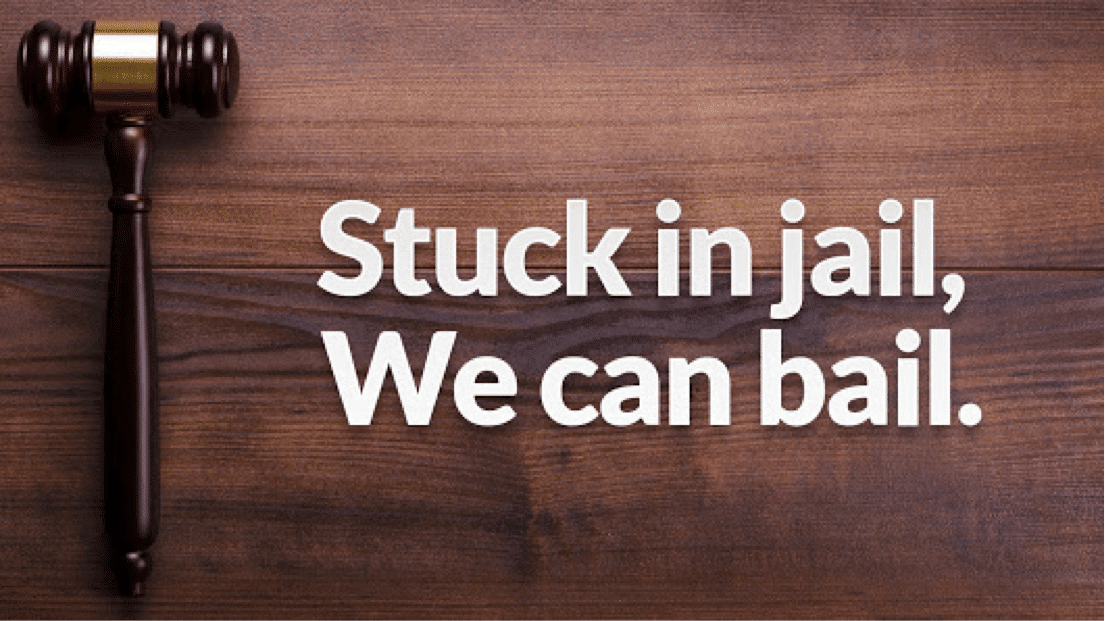Top Tips for Working Efficiently with a Bail Bondsman
Top Tips for Working Efficiently with a Bail Bondsman
Blog Article
Just How Bail Bonds Work: A Thorough Introduction
Bail bonds play a vital role in the legal procedure by offering a system for people to secure their launch from guardianship while awaiting trial. Recognizing the intricacies of how bail bonds function, including the roles of courts, bail bondsmensman, and the various costs entailed, can be important for any person browsing this complex system. As we discover the different kinds of bail bonds and the elements that affect their expenses, it becomes apparent that the obligations tied to these arrangements expand much past plain financial deals. What implications do these duties hold for defendants and their family members?
What Are Bail Bonds?
Bail bonds are commonly utilized in the criminal justice system as an economic guarantee that a charged person will certainly show up in court as needed. When a person is detained, a court may establish a bond amount based on numerous variables, including the severity of the infraction, the defendant's criminal history, and the threat of trip. If the implicated can not afford the bail quantity, they might seek the help of a bond bondsman.
A bail bond is a contract between the offender, the bail bondsman, and the court, ensuring that the offender will certainly accomplish their legal commitments. For a charge, usually a percentage of the overall bail quantity, the bail bondsman gives the court with a surety that guarantees the bail. If the charged stops working to appear in court, the bail bondsman is accountable for paying the complete bail amount to the court, which might lead them to pursue the accused for recuperation.
Bail bonds serve to promote the launch of people awaiting trial, allowing them to preserve their work and family responsibilities while making sure compliance with court appearances. This system is integral to balancing the legal rights of the charged with the passions of public safety and judicial stability.
The Bail Process Explained
After understanding the function of bail bonds in the criminal justice system, it is essential to describe the bail process itself. When a person is arrested and taken into safekeeping, the bail process begins. Following the arrest, the accused is typically brought prior to a judge for an initial hearing, where the court will identify whether to approve bail and set the quantity.
If bail is provided, the defendant has a number of options to secure their release. They may pay the complete bail amount in money, which is returned upon the completion of their court obligations. Additionally, the offender can look for the help of a bond bondsman, who charges a non-refundable fee-- usually a percent of the overall bail amount-- to publish bail on their behalf.
As soon as bail is posted, the defendant is released from protection with the understanding that they need to participate in all arranged court appearances. Stopping working to show up can result in the loss of the bail and added lawful consequences. The procedure concludes when the situation is resolved, whereupon the bail is either returned or maintained by the bondsman as settlement for their solutions.

Kinds Of Bail Bonds
When it comes to protecting a release from guardianship through bail bonds,Numerous choices exist. Comprehending the various types can assist accuseds and their families make educated options.
One of the most typical type is the surety bond, which involves a third-party bail bondsmansman that ensures the full bail amount to the court in exchange for a non-refundable fee, Continue generally around 10% of the bail amount. This choice is commonly used due to its availability for people who might not have the financial means to pay the complete bail upfront.
An additional kind is the cash money bond, where a co-signer or the accused pays the total bail quantity in cash money directly to the court. Upon successful conclusion of the instance, the funds are reimbursed, minus any relevant costs.

Finally, migration bonds are specifically developed for people detained by immigration authorities, promoting their launch while they await legal procedures. Each kind of bail bond offers unique objectives, accommodating different situations and requires within the lawful system.
Variables Impacting Bail Costs
Numerous key aspects influence the overall price of bail, establishing just how much an accused or their family may need to pay for release. One of the main factors is the extent of the charges. Felony charges generally lead to greater bail quantities compared to violations due to the viewed risk of trip and the prospective consequences of the violation.

Courts might think about a defendant's earnings and properties when determining bail, potentially leading to greater costs for those with better financial resources. If a bond bondsman regards browse around this site a greater threat, they may set a higher premium, additional raising the costs connected with safeguarding a bail bond.
Responsibilities of the Indemnitor
Once bail has actually been safeguarded, the duties of the indemnitor, or the person who accepts back the bail bond, entered play. The indemnitor is mainly liable for ensuring that the offender attends all scheduled court looks. Failure to do so may cause the forfeiture of the bail bond and potential legal effects for the indemnitor.
Furthermore, the indemnitor is obligated to repay the bail bond company the sum total of the bond if the defendant stops working to appear in court. This includes any type of charges or expenses sustained by the bail agent in recuperating the offender, which might better rise the financial burden on the indemnitor.
The indemnitor has to also maintain open interaction with both the offender and the bail bondsman, supplying any type of necessary updates associated to the defendant's situation. It is essential for the indemnitor to stay knowledgeable about the legal commitments and consequences related to the bail bond, as ignorance might result in unplanned liabilities.
Conclusion
In recap, bail bonds function as a vital mechanism within the criminal justice system, promoting the launch of accuseds while ensuring their appearance in court. Comprehending the different sorts of bail bonds, the complexities of the bail procedure, and the aspects influencing bail expenses is crucial for navigating this complex landscape. In addition, understanding of the obligations borne by the indemnitor highlights the value of informed decision-making when engaging with bail bond solutions.
Comprehending the complexities of how bail bonds function, consisting of the functions of courts, bail bondsmen, and the different costs included, can be necessary for anybody navigating this intricate system.After understanding the duty of bail bonds in the criminal justice system, it is crucial to detail the bail process itself. The accused can look for the help of a bail blog here bondsman, who bills a non-refundable cost-- normally a percentage of the complete bail amount-- to upload bail on their part.
If a bail bondsman views a higher threat, they may establish a higher costs, additional boosting the expenses linked with safeguarding a bail bond. Recognizing the numerous kinds of bail bonds, the details of the bail process, and the factors influencing bail expenses is crucial for navigating this complex landscape.
Report this page